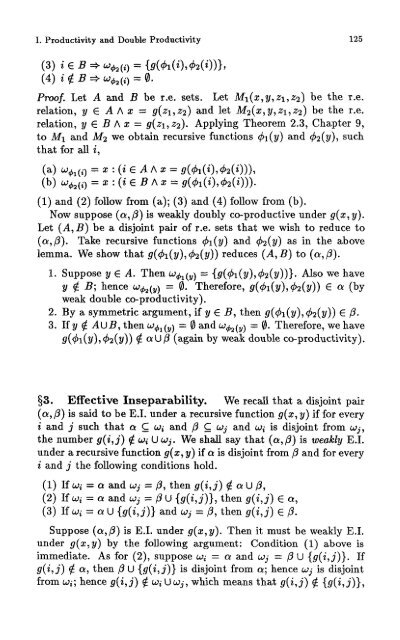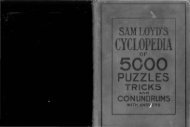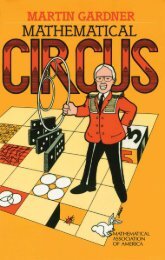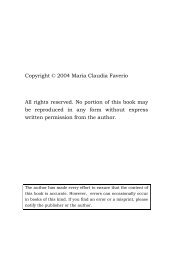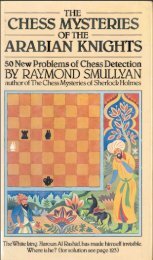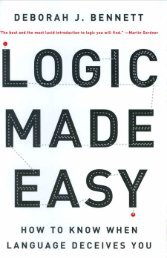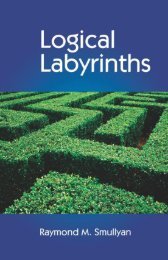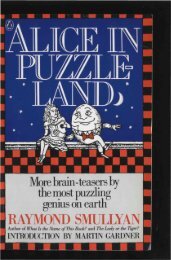Double Recursion Theorems
Double Recursion Theorems
Double Recursion Theorems
- No tags were found...
You also want an ePaper? Increase the reach of your titles
YUMPU automatically turns print PDFs into web optimized ePapers that Google loves.
I. Productivity and <strong>Double</strong> Productivity 125(3) t 6 B =>• u»fc (0 = {0(&(0»&(0)}»(4) t ^ B =» w faw = 0.Proof. Let A and J0 be r.e. sets. Let Mi(x,y, £1,22) t> e the r.e.relation, y € A A x = 5(21,22) an d l et M%(x, y,z\,22) be the r.e.relation, y € -B A x = g(zi,z 2 ). Applying Theorem 2.3, Chapter 9,to MI and MI we obtain recursive functions 0i(y) and suc hthat for all i,(a) w^lW = x : (i € A A x = 0(&(t)»&(0))>(b) o^2(i) = z:(i€BAx = flf(^i(t),02(*)))-(1) and (2) foUow from (a); (3) and (4) foUow from (b).Now suppose («,/?) is weakly doubly co-productive under g(x, y).Let (A, B) be a disjoint pair of r.e. sets that we wish to reduce toas(a,f3). Take recursive functions z(y)m the abovelemma. We show that g((t>i(y),2(y)) reduces (A,B) to (a,/?).1. Suppose y e A. Then W0i( y ) = {s(^i(y),$2(y))}- Also we havey ; = a and MJ = f3 U {p(i,j)}' ^9(^1 j) & a ) then /? U {


